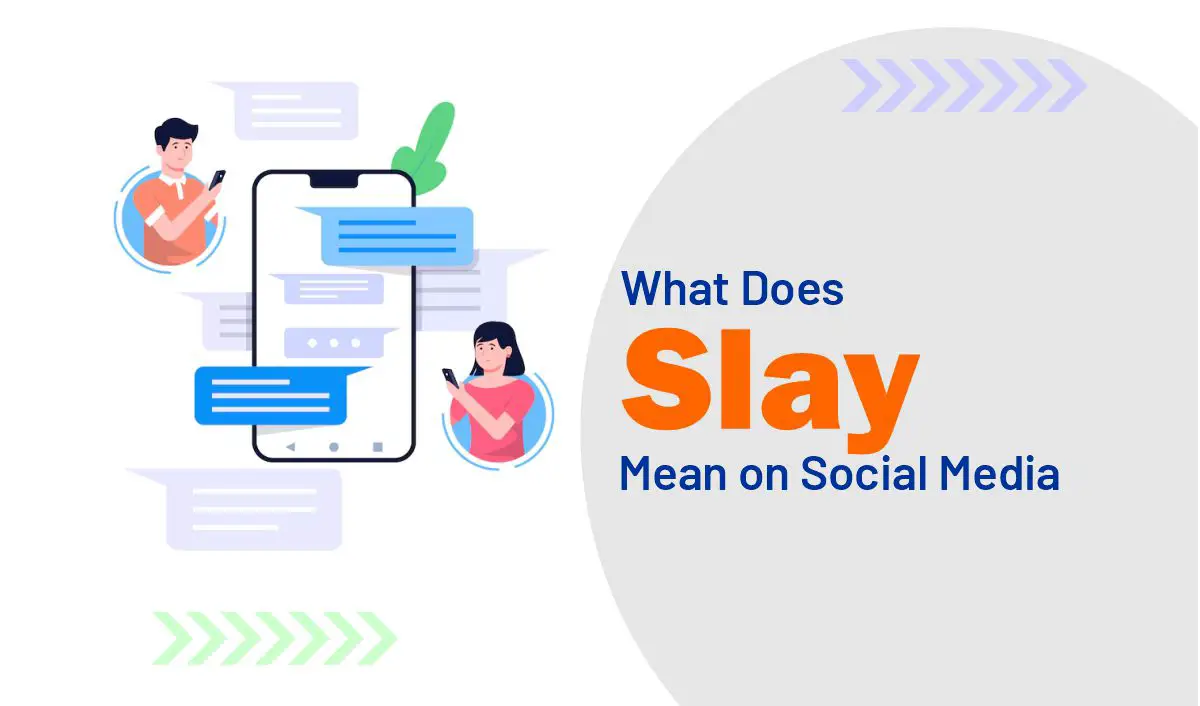What Does “Slay” Mean? A Deep Dive into the Term, Its Rise on Social Media, and the Meaning of “Slay Queen”
The term “slay” has evolved from its original literal meaning to become one of the most popular and empowering slang expressions in the digital age. In today’s culture—particularly on social media—“slay” is a bold, positive, and expressive word used to applaud confidence, style, talent, and success. But where did it come from? Why has it become so influential online? And what’s the real meaning behind terms like “slay queen”?
In this article, we explore the complete evolution of the word “slay,” its cultural significance, social media usage, and the dual-edged connotations of phrases like “slay queen.” Whether you’re new to the term or just want to understand its broader implications, this deep dive covers everything you need to know.
1. The Evolution of the Word “Slay”
A. Historical Meaning
Historically, “slay” originates from Old English slean, meaning “to strike” or “to kill.” It traditionally referred to violent action, such as slaying a beast or an enemy. For centuries, the word was primarily used in literal, physical contexts, often seen in religious texts, literature, and warfare descriptions.
B. Modern Slang Adaptation
Fast forward to the 20th and 21st centuries, “slay” underwent a linguistic transformation, especially within African-American Vernacular English (AAVE). By the 1980s and 1990s, it began appearing in underground LGBTQ+ ballroom culture, where phrases like “you slayed that look” or “she came to slay” were popularized as expressions of fierce confidence, particularly in fashion, dance, and performance.
In this newer context, “slay” no longer meant to kill—but to dominate or excel. To “slay” something was to do it so well that you metaphorically “killed it” (another expression for excellence or power).
2. What Does “Slay” Mean Today?
In today’s popular culture, especially online, “slay” is a highly flexible term that conveys admiration, empowerment, and success. Here’s how it’s typically used:
A. Compliment on Appearance
One of the most common uses of “slay” is to describe someone who looks absolutely stunning. If someone is dressed up for an event or posts a stylish photo, followers might comment:
- “You slayed that look!”
- “Girl, you slay every time.”
- “Total slay!”
It’s a powerful way to express that someone’s appearance is on point—confident, beautiful, and flawless.
B. Applauding Talent or Achievement
The term is also used to praise people who perform exceptionally well—whether it’s in singing, dancing, public speaking, sports, or any other talent. For example:
- “She slayed that performance!”
- “He slays every time he’s on stage.”
- “You slayed your speech today!”
C. Celebrating Confidence and Attitude
“Slay” is not just about aesthetics or performance—it’s about presence. When someone carries themselves with confidence, fearlessness, and charisma, people might say:
- “Slay, queen!”
- “You’re slaying with that energy.”
- “Slay all day!”
It highlights inner confidence and the ability to stand out in a powerful, authentic way.
3. How Did “Slay” Become Popular on Social Media?
The rise of “slay” in social media culture can be credited to several overlapping cultural movements and digital influences:
A. Ballroom and LGBTQ+ Culture
As mentioned earlier, “slay” gained popularity through ballroom culture—a vibrant subculture led primarily by Black and Latinx LGBTQ+ communities in the 1980s and ’90s. Competitors in drag shows and dance battles used the term liberally to express dominance in fashion, movement, and creativity.
B. Beyoncé and Pop Culture Icons
Mainstream awareness of the word skyrocketed after Beyoncé’s iconic use of it. In her 2013 song “Flawless,” she famously sang: “I woke up like this—I slay.” That one line helped catapult the term into global consciousness, especially among younger audiences on social platforms like Instagram and Twitter.
Following Beyoncé, other celebrities—like Rihanna, Nicki Minaj, Lady Gaga, and drag queens from RuPaul’s Drag Race—embraced and popularized the term. As a result, “slay” became synonymous with empowerment, beauty, confidence, and talent.
C. Viral Trends and Hashtags
On platforms like Instagram, TikTok, and X (formerly Twitter), “slay” became a go-to expression for captions, comments, and hashtags. Some of the most popular ones include:
- #Slay
- #SlayQueen
- #SlayGoals
- #SlayMode
- #SlayTheDay
These hashtags helped users find and share content focused on fashion, makeup, personal achievements, and moments of self-expression. Influencers and creators often used these hashtags to increase visibility and connect with communities that celebrate individuality and excellence.
4. How to Use “Slay” on Social Media
Using “slay” appropriately is all about context, tone, and timing. Here are a few ways to integrate the term into your social media posts effectively:
A. Captions
Use “slay” in your captions when you want to showcase confidence, style, or accomplishment. For example:
- “Feeling myself today. Slay mode activated. 💅✨”
- “New outfit, new vibe. Slay the day! 👑”
- “Slayin’ this look like it’s nobody’s business.”
B. Comments
“Slay” is a perfect response when someone posts a stylish photo or an impressive video. You can keep it short or elaborate:
- “Yassss, you slayed this!!! 🔥🔥🔥”
- “Slay queen! That dress is everything. 😍”
- “Omg, you’re slaying harder than ever!”
C. Hashtags
Incorporate hashtags to join trending conversations or to get discovered. Some options include:
- #SlayQueen
- #SlayOn
- #SlayEveryday
- #SlayAllDay
- #SlayGoals
D. Emojis to Pair with “Slay”
Adding emojis can enhance the tone of your slay-related posts. Popular choices include:
- 🔥 (fire) – for something amazing
- 👑 (crown) – royalty, queen energy
- 💅 (nail polish) – sass and confidence
- 💃 (dancer) – celebration and movement
- 💪 (biceps) – strength and empowerment
E. Story Highlights or Reels
If you’re posting a confident moment, dance challenge, or glam look in your Instagram Stories or Reels, a bold “Slay 🔥” sticker or caption makes it pop.
5. What is a “Slay Queen”?
The phrase “slay queen” is one of the most widely recognized spin-offs of the term “slay.” While it often celebrates feminine power and style, its meaning can vary depending on context and region.
A. Positive Meaning
In its most empowering form, a “slay queen” is a woman who exudes confidence, beauty, and influence. She is admired for her fashion sense, assertiveness, and social presence. She might be a trendsetter, influencer, entrepreneur, or simply someone who inspires others through her self-love and personal flair.
Some attributes of a positively perceived slay queen:
- Bold and confident
- Stylish and fashion-forward
- Independent and self-assured
- Unapologetically expressive
In many ways, being called a “slay queen” is a compliment—especially among friends and fans. It’s like saying, “You’re killing it, and everyone sees it.”
B. Negative Connotations
However, not all uses of “slay queen” are positive. In some regions—especially in African countries like Kenya, Nigeria, and South Africa—the term can also be used derogatorily. In these cases, “slay queen” may refer to a woman perceived as:
- Superficially focused on looks and material things
- Dependent on others financially (e.g., “sugar daddies”)
- Obsessed with fame, luxury, or social media validation
- Lacking substance or depth
This duality makes “slay queen” a controversial term. It can be either empowering or insulting, depending on who says it and how it’s used.
6. Cultural and Regional Interpretations
The meaning of “slay” and “slay queen” can differ based on geography and cultural context.
- In Western countries: “Slay” is largely seen as an empowering term, especially among younger generations, LGBTQ+ communities, and pop culture fans.
- In African cultures: While “slay queen” can still be positive, it’s often used to critique women perceived as prioritizing appearance and wealth over values or intellect.
- On global platforms: The term generally retains a playful, stylish vibe, especially when used with emojis, GIFs, or influencer content.
7. Final Thoughts: Why “Slay” Matters
In the age of social media, language evolves rapidly—and “slay” is a perfect example of how a single word can transform into a powerful expression of identity, confidence, and culture.
At its core, “slay” celebrates excellence. Whether you’re owning the dance floor, acing a presentation, rocking a killer outfit, or simply showing up as your best self—“slay” is a way for the internet to say: “I see you. You’re amazing. Keep shining.”
However, as with all slang, it’s important to be mindful of context. The same word can uplift in one community and offend in another. When used with intention and authenticity, though, “slay” remains one of the most stylish, spirited, and supportive expressions in the digital world.
TL;DR:
- “Slay” means to do something exceptionally well or look amazing.
- It’s used heavily on social media to praise looks, talent, or confidence.
- Hashtags like #slay, #slayqueen, and #slaygoals are popular online.
- “Slay queen” can be empowering or controversial depending on the context.
- The term celebrates individuality, especially in fashion, performance, and self-expression.
Read these also:

